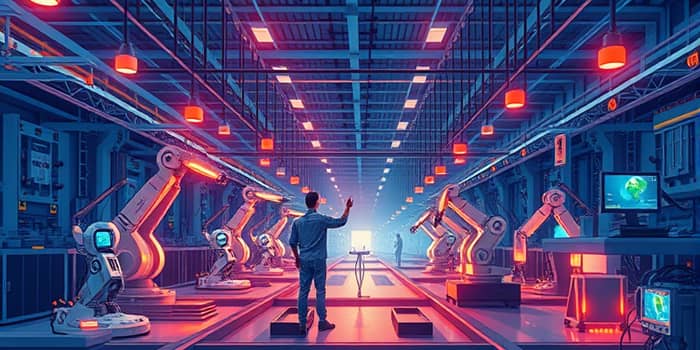
In an era of relentless disruptions—supply chain shocks, labor shortages, and cybersecurity threats—manufacturers are redefining what it means to be resilient. Automation has emerged as a cornerstone of this transformation, enabling companies to anticipate challenges and adapt with unprecedented agility.
By integrating intelligent systems and advanced robotics, organizations are not just recovering from crises; they are building foundations that allow them to thrive amid volatility. This article explores how automation is driving a new era of manufacturing resilience, backed by data, trends, and strategic insights.
The global industrial automation and control systems market is set to reach 226.8 billion dollars in 2025, reflecting sustained momentum from a 2024 valuation of $206 billion. A compound annual growth rate of 10.8% through 2030 underscores the accelerating investments in smart manufacturing technologies.
By 2024, around 60% of companies had adopted some form of automation, with Asia-Pacific leading at 39% of total revenues. North America, meanwhile, stands out for financial process automation, illustrating how regional strengths shape diverse adoption pathways.
At its core, manufacturing resilience is the ability to withstand shocks and rapidly recover operations. Automation enhances this by embedding flexibility and adaptability in operations, enabling production lines to reconfigure in real time in response to raw material shortages, demand fluctuations, or logistical bottlenecks.
Advanced systems powered by AI, IoT sensors, and robotics allow continuous monitoring of equipment health, early detection of anomalies, and predictive maintenance. This proactive stance drastically reduces downtime and extends asset lifespans, creating resilient digital manufacturing ecosystems that respond dynamically to change.
By linking facilities to nearshore or reshored suppliers through automated workflows, companies can diversify risks while maintaining cost efficiencies. This networked approach fosters a supply chain that is not only robust but also agile, significantly mitigating vulnerabilities.
Manufacturers face a complex interplay of internal objectives and external pressures. Internal drivers often center on the imperative to integrate processes facility-wide, bridging data silos and driving efficiency. Many organizations wrestle with the tension between preserving product quality and pursuing profitable growth.
Externally, rising cybersecurity risks—manufacturing accounts for 21% of ransomware attacks—demand that digital transformations include robust defenses. Persistent supply chain volatility is pushing reshoring and nearshoring, with automation as the critical enabler. Workforce shortages further amplify the need for workforce transformation and augmentation, as a leaner team equipped with advanced tools delivers higher output.
Companies investing in automation report an average 22% reduction in operating costs, with robotic process automation (RPA) delivering between 30% and 200% ROI in the first year. Over 90% of workers also report productivity improvements, showcasing the human-technology synergy at the heart of modern factories.
Looking ahead, automation is projected to displace 92 million jobs by 2030 but simultaneously create 170 million new ones—a net gain of 78 million positions. This transformational shift underscores how automation drives not just efficiency but also workforce evolution, with a premium on technological skill sets and continuous learning.
Despite the promise, 70% of automation projects fall short of objectives. Common hurdles include complex integration requirements, change management resistance, and inflated expectations. A short-term slowdown in investments during 2024–2025—driven by a well-stocked inventory bulge—highlights cyclical volatility, known as the bullwhip effect.
To overcome these barriers, manufacturers are adopting phased rollouts, prioritizing high-impact use cases, and fostering cross-functional teams. Embedding cybersecurity at every stage of deployment and committing to substantial workforce reskilling and upskilling are also critical for sustaining momentum and achieving long-term payoffs.
Forward-looking manufacturers are aligning their roadmaps around four strategic imperatives:
Automation has transcended its role as a productivity enhancer to become a foundational pillar of manufacturing resilience. By integrating intelligent systems, companies can not only weather disruptions but also chart new pathways for growth, innovation, and workforce transformation.
As the global market races toward $226.8 billion in 2025 and beyond, the winners will be those who embrace a holistic approach—one that marries cutting-edge technology, robust cybersecurity, and a dynamic, skilled workforce—to build truly resilient manufacturing ecosystems.
References













